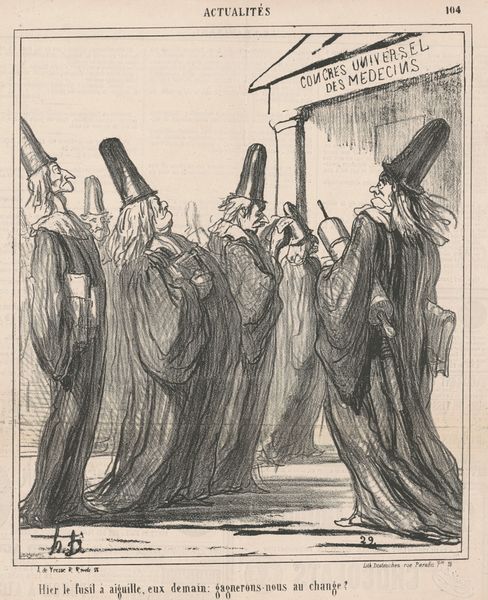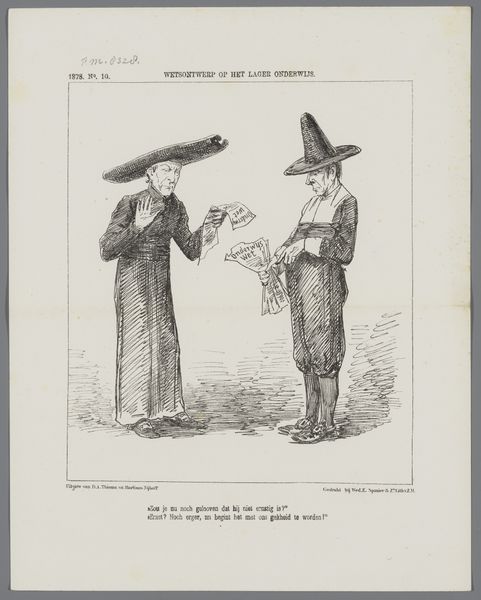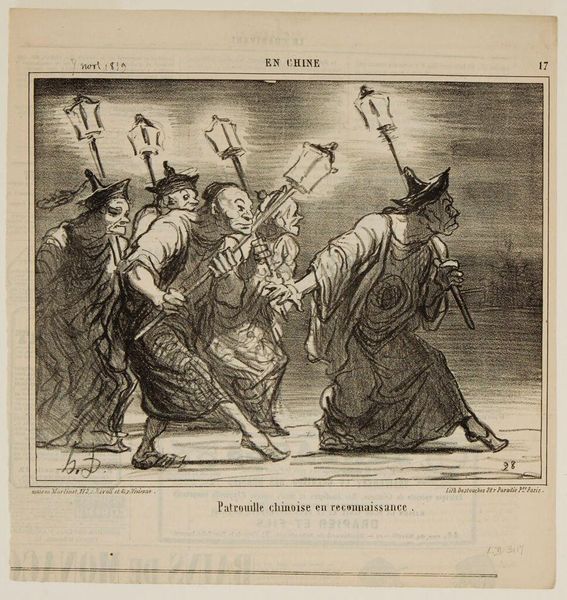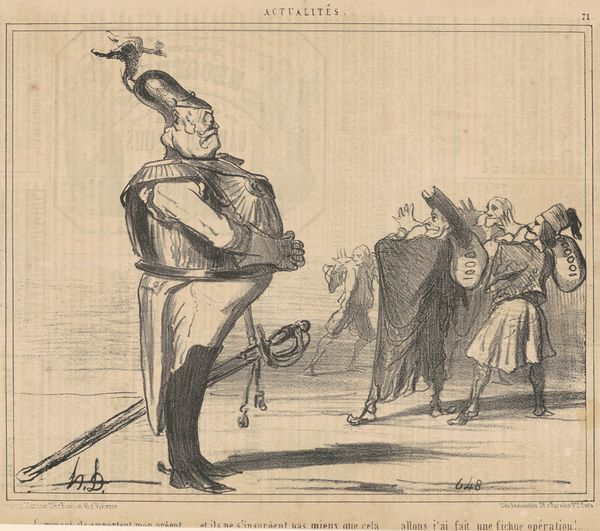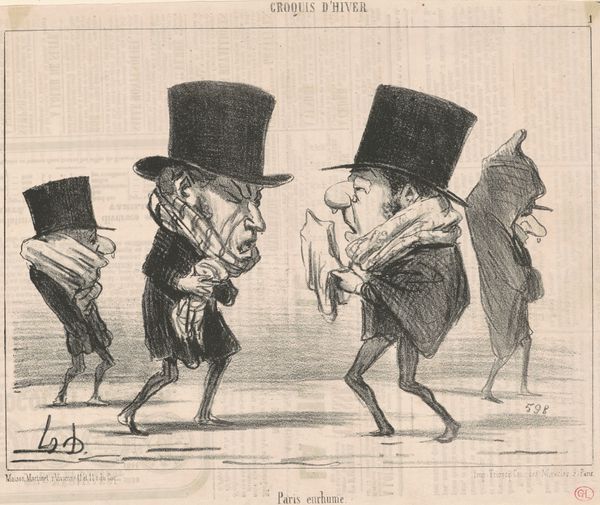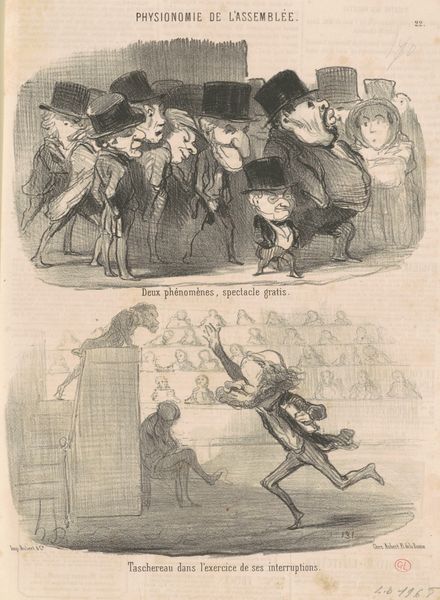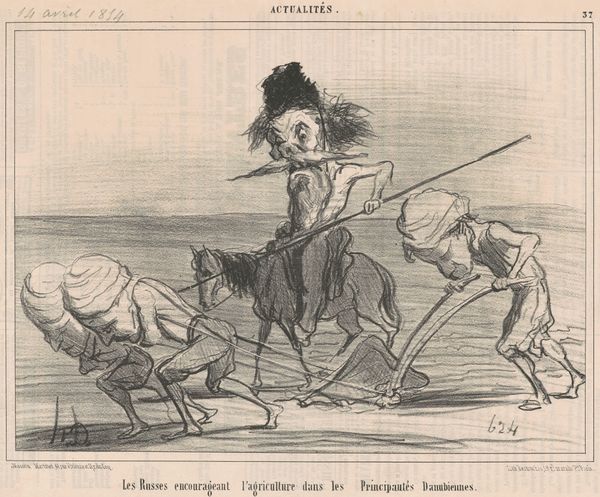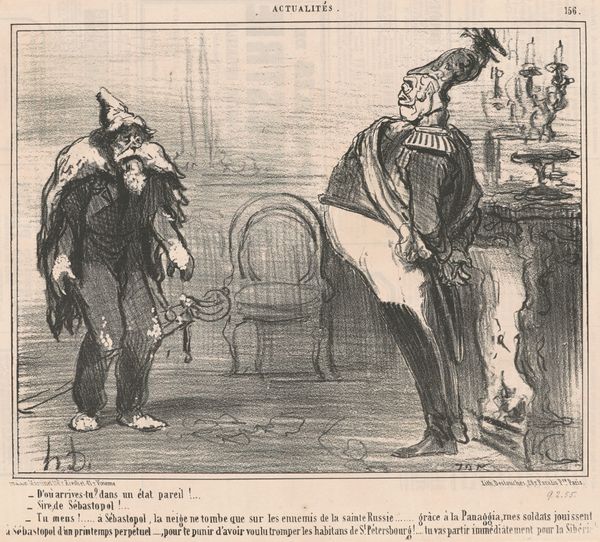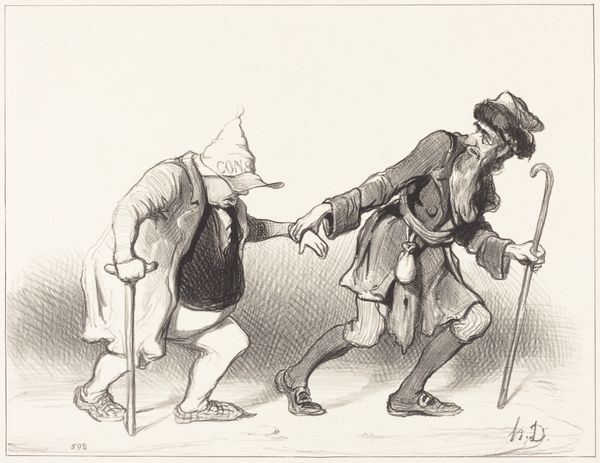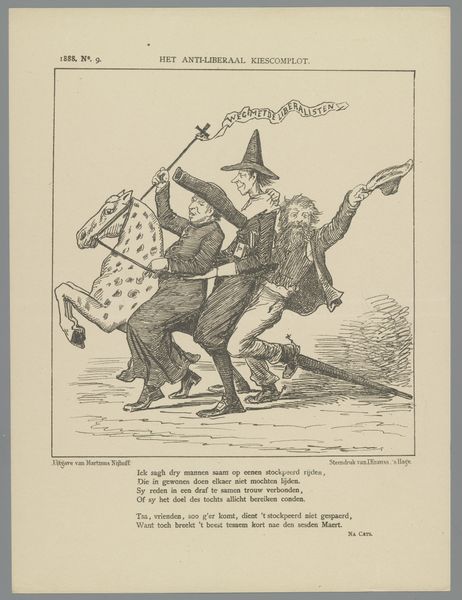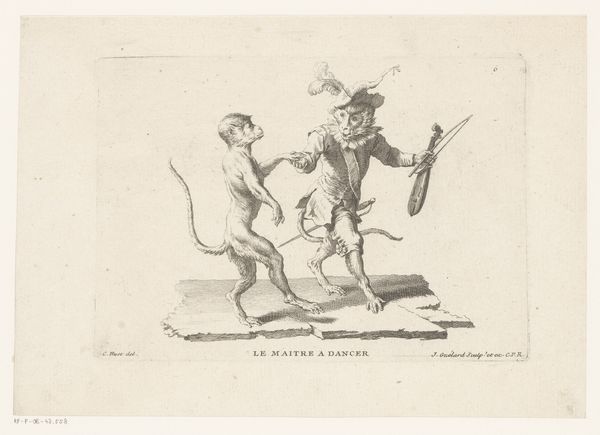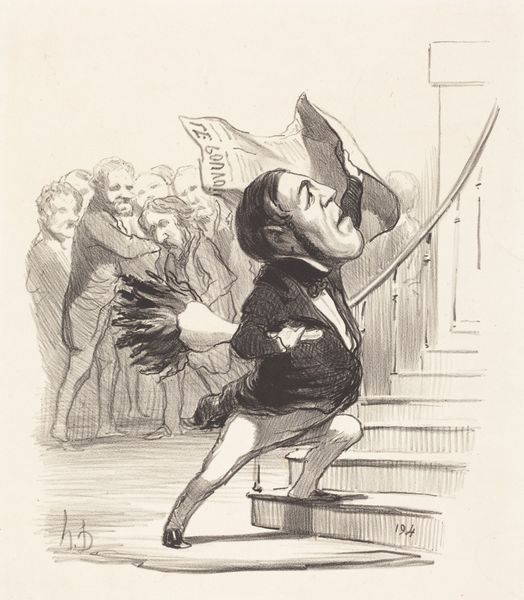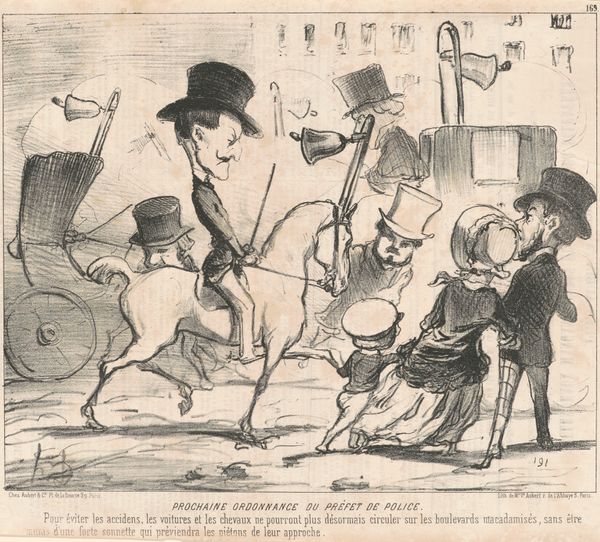
Karikatuur van drie Russische soldaten die door een zweep worden voortgedreven 1854
0:00
0:00
Dimensions: height 260 mm, width 339 mm
Copyright: Rijks Museum: Open Domain
Curator: I'm struck by the dynamism captured in Honoré Daumier's lithograph, created in 1854: "Caricature of Three Russian Soldiers Driven by a Whip." The forceful lines lend an incredible sense of forward motion. Editor: There is something deeply unsettling about the exaggerated features, like masks of suffering almost, combined with that sharp, cruel whip. It feels incredibly bleak. Curator: Precisely. Observe how Daumier uses the stark contrast of light and shadow to amplify the dramatic tension. The figure wielding the whip is cloaked in darkness, while the bound soldiers are rendered with finer lines, their vulnerability exposed. This dichotomy effectively conveys the power imbalance. Editor: I can't help but consider the societal implications. The materials employed—the lithographic stone and ink—allowed for mass production, turning the work into political commentary disseminated amongst the French populace during the Crimean War. Was Daumier implicating societal structures in enabling these atrocities? Curator: Undoubtedly. His manipulation of line creates palpable tension, yet we find areas left sparsely rendered, focusing our attention precisely where Daumier wishes it to rest: the grim expressions of the soldiers and the whip. The visual rhetoric evokes a deep sense of injustice. Editor: And this work's physical existence as a print transforms it from singular artwork to reproducible message, capable of sparking dialogue and challenging assumptions regarding power and authority, labor, and political engagement. It highlights how material factors allow an artwork to move and breathe through a complex societal body. Curator: It's an unsettling piece, indeed, yet deeply insightful when you attend to the nuances of its composition. Editor: Absolutely. By contemplating the interplay of material conditions and artistic decisions, we see how this print actively shapes the conversations surrounding conflict.
Comments
No comments
Be the first to comment and join the conversation on the ultimate creative platform.
